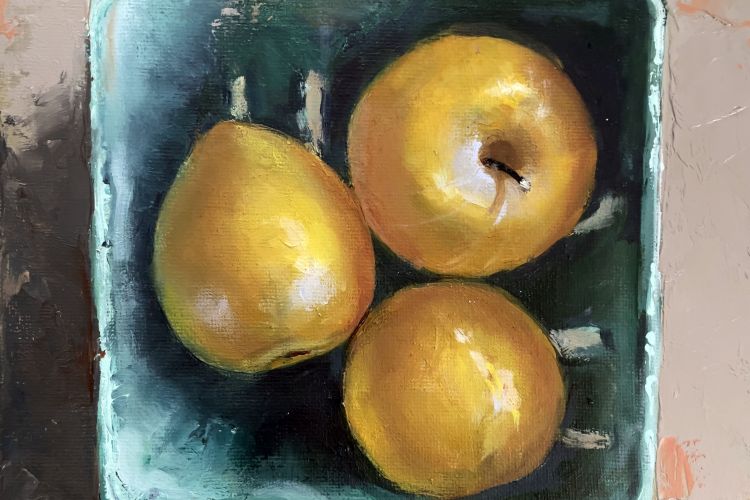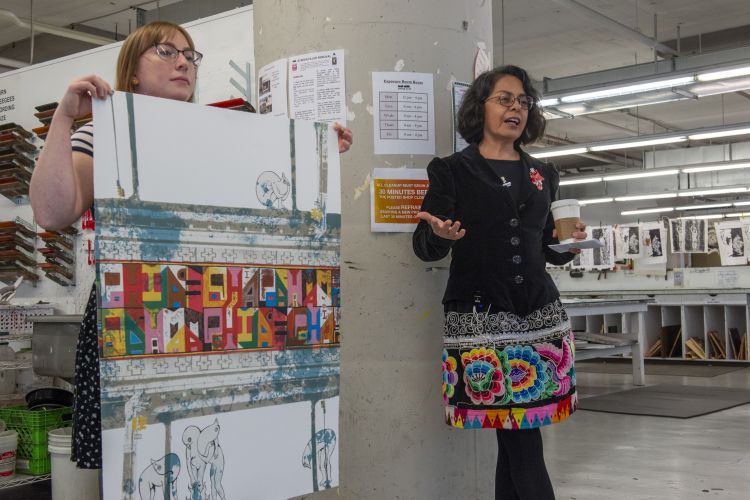STORIES FROM PAFA
Behind the Canvas: The Art Conservator's Magic Touch
Restoring Artworks for Layers of Liberty: Philadelphia and the Appalachian Environment and the 2026 Reinstallation of PAFA’s Permanent Collection
To some, conservators are magic-wielding wizards possessing encyclopedic knowledge and sophisticated techniques to restore and preserve old artifacts for future generations. In reality, their work is a blend of advanced science and skill, derived from years of study and dedication to the craft. Nonetheless, the results they achieve are amazing, borderline metaphysical. And when we were getting ready for the opening of Layers of Liberty: Philadelphia and the Appalachian Environment, we identified four works desperately in need of a conservator’s magic touch, two of which we’re highlighting here.
Conservation work in progress on John Carroll's "Agatha" under the microscope. Courtesy of Flux Art Conversation.
To restore these pieces, PAFA collaborated with Flux Art Conservation in Philadelphia. Terra Foundation Curatorial Fellow and curator of Layers of Liberty, Ali Printz, along with a team from Wherehouse Films, visited Flux to document the restoration process. The Flux team, led by Elizabeth “Beth” Nunan, Owner and CEO, eagerly undertook the restoration. With roots in Appalachia (East Tennessee), Beth felt a personal affinity toward the artworks from her home region, making the project deeply meaningful to her.
Preserving museum collections is an art in itself, involving climate control, regular TLC, and specialized restoration techniques. Decisions regarding conservation methods, materials, and costs are carefully weighed, prioritizing what is best for the artwork, while balancing other considerations. Each piece is individually assessed and treated with a customized plan, as demonstrated by the diverse treatments applied to these works:
"Coal Mine", (1939) is one of three works on view in Layers of Liberty by Henry McCarter (1864-1942), a prominent teacher at PAFA and famed illustrator and painter. Born in Norristown, Pennsylvania, McCarter studied at PAFA, trained in Paris with Henri de Toulouse-Lautrec and Pierre Puvis de Chavannes, and taught at PAFA for nearly 40 years, influencing students like Charles Demuth and George Biddle.
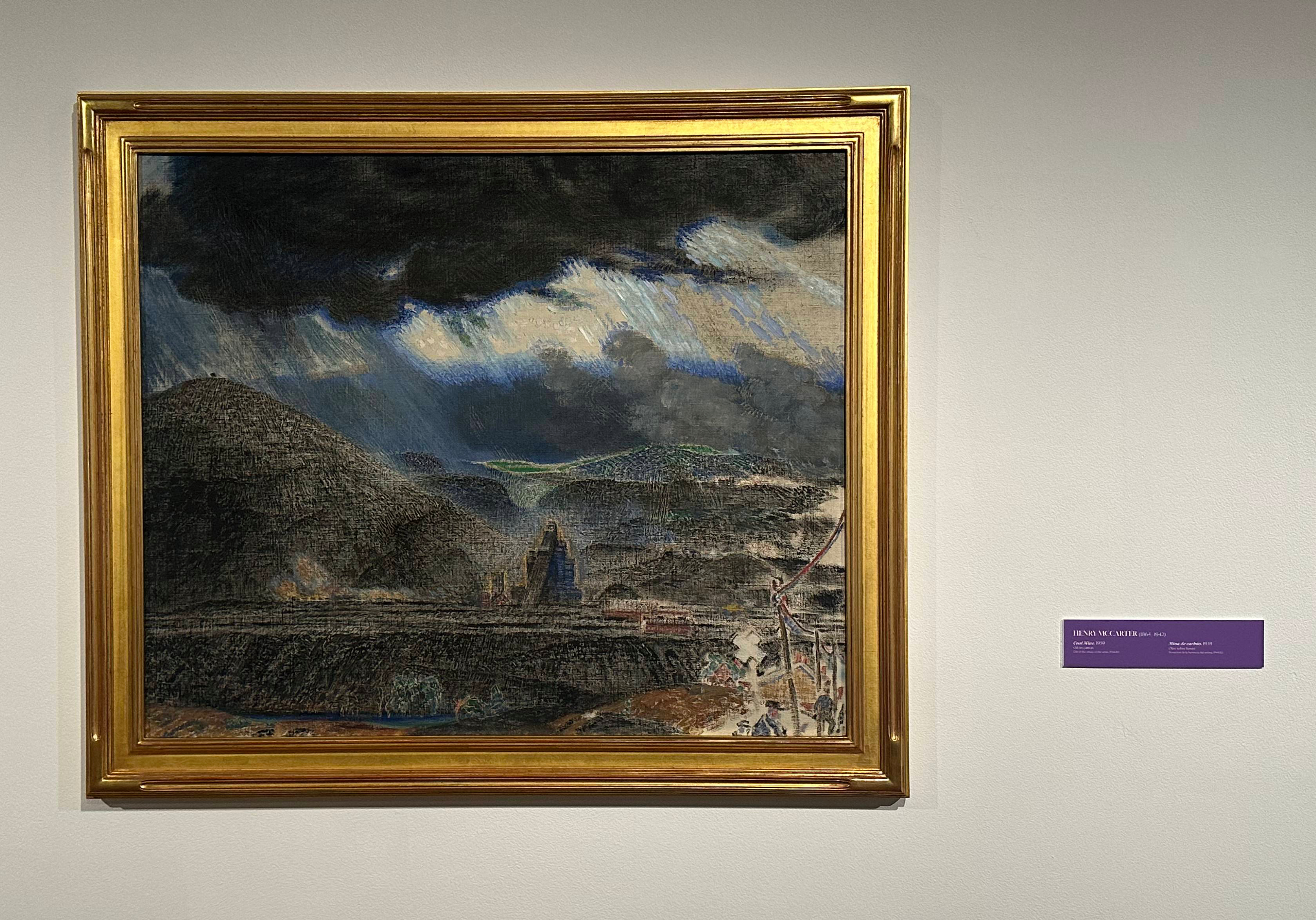
Ross Eugene Braught, In the Valley, 1922. Oil on canvas, 46 1/2 x 50 1/2 in. (118.1 x 128.3 cm.). John Lambert Fund, 1923.3.
Completed towards the end of his life in Appalachian Pennsylvania, this painting depicts a dark storm cloud with sunlight peeking through over a coal mine, and in the bottom right corner, a scene of miners in the town outside the mine. This scene mimics an earlier watercolor by Charles Burchfield (1883-1967), "End of the Day," which shows miners walking home from the workday.
The painting underwent a thorough cleaning process to remove a grimy substance that had accumulated on its surface over the years. Conservators meticulously worked to restore the artwork's original vibrancy and detail, carefully dissolving and lifting away the grime without damaging the delicate paint beneath. Once cleaned, the painting was fitted with a new frame that not only enhances its aesthetic appeal but also provides improved structural support and protection. The new frame was chosen to complement the artwork, ensuring it is preserved and presented in the best possible manner for future display and enjoyment.
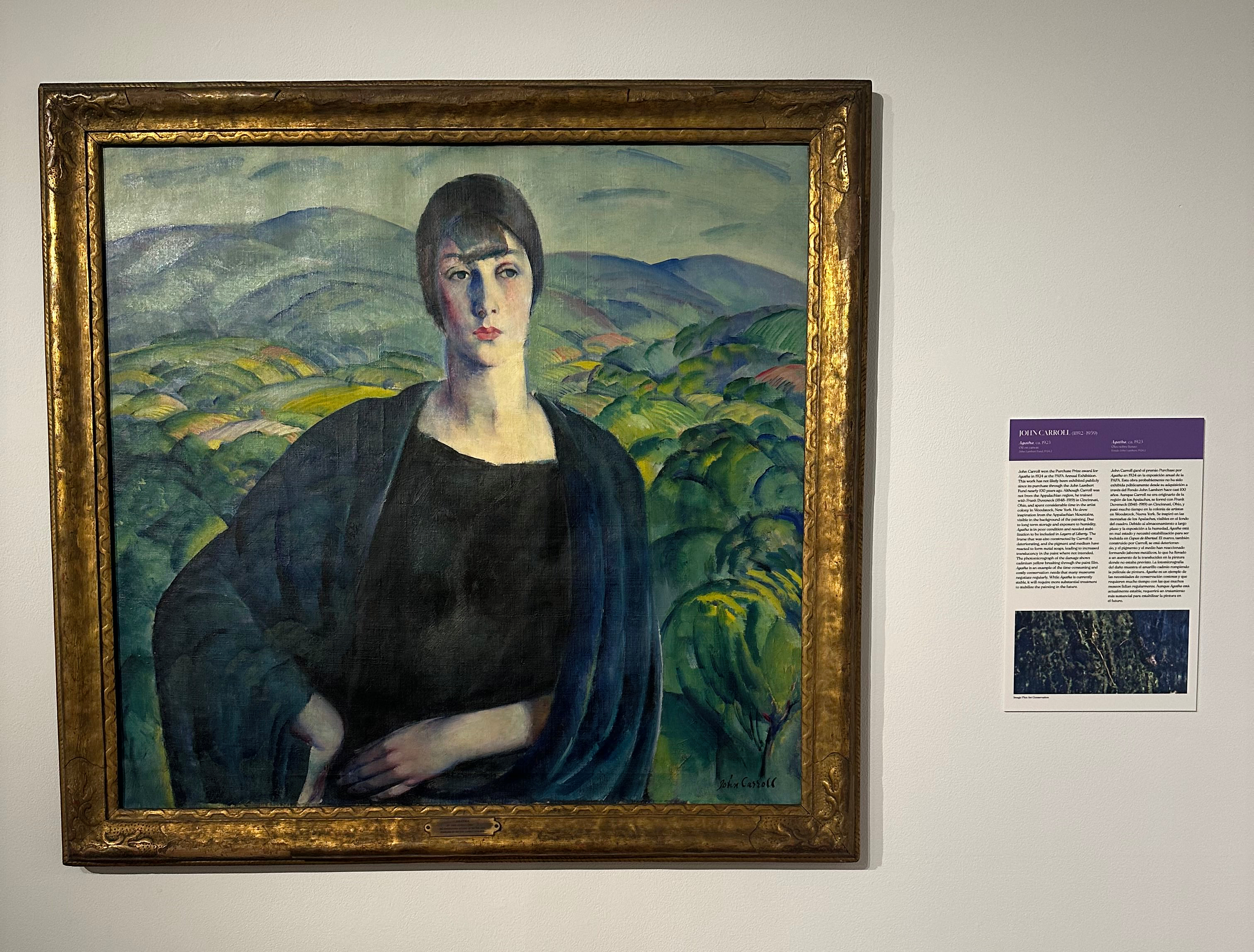
John Carroll, Agatha, ca. 1923. Oil on canvas, 33 15/16 x 36 1/16 in. (86.2 x 91.6 cm.). John Lambert Fund, 1924.2.
“Agatha” (ca. 1923) by John Carroll (1892-1959) has not been shown for 100 years since it won a prize at PAFA’s Annual Student Exhibition in 1924. Although Carroll was not from the Appalachian region, he trained with Frank Duveneck in Cincinnati, Ohio, and spent considerable time in Woodstock, New York. He drew inspiration from the Appalachian Mountains, which are visible in the painting's background.
Due to long-term storage and humidity exposure, "Agatha" is in poor condition and required stabilization for inclusion in the Layers of Liberty exhibit. The frame, also constructed by Carroll, is deteriorating, and the paint has formed metal soaps, causing unintended translucency. A photomicrograph shows cadmium yellow breaking through the paint film. "Agatha" exemplifies the costly and time-consuming conservation needs many museums face. While currently stable, the painting will require more substantial treatment in the future. It has been left as is with visible damage for the public to see what happens to paintings over time when exposed to humidity and various other issues.
Not only were these works conserved in time for Layers of Liberty, but also in preparation for the re-installation of PAFA’s permanent collection happening in 2026 - this visit was filmed as part of a documentary about the re-installation (stay tuned for details!).
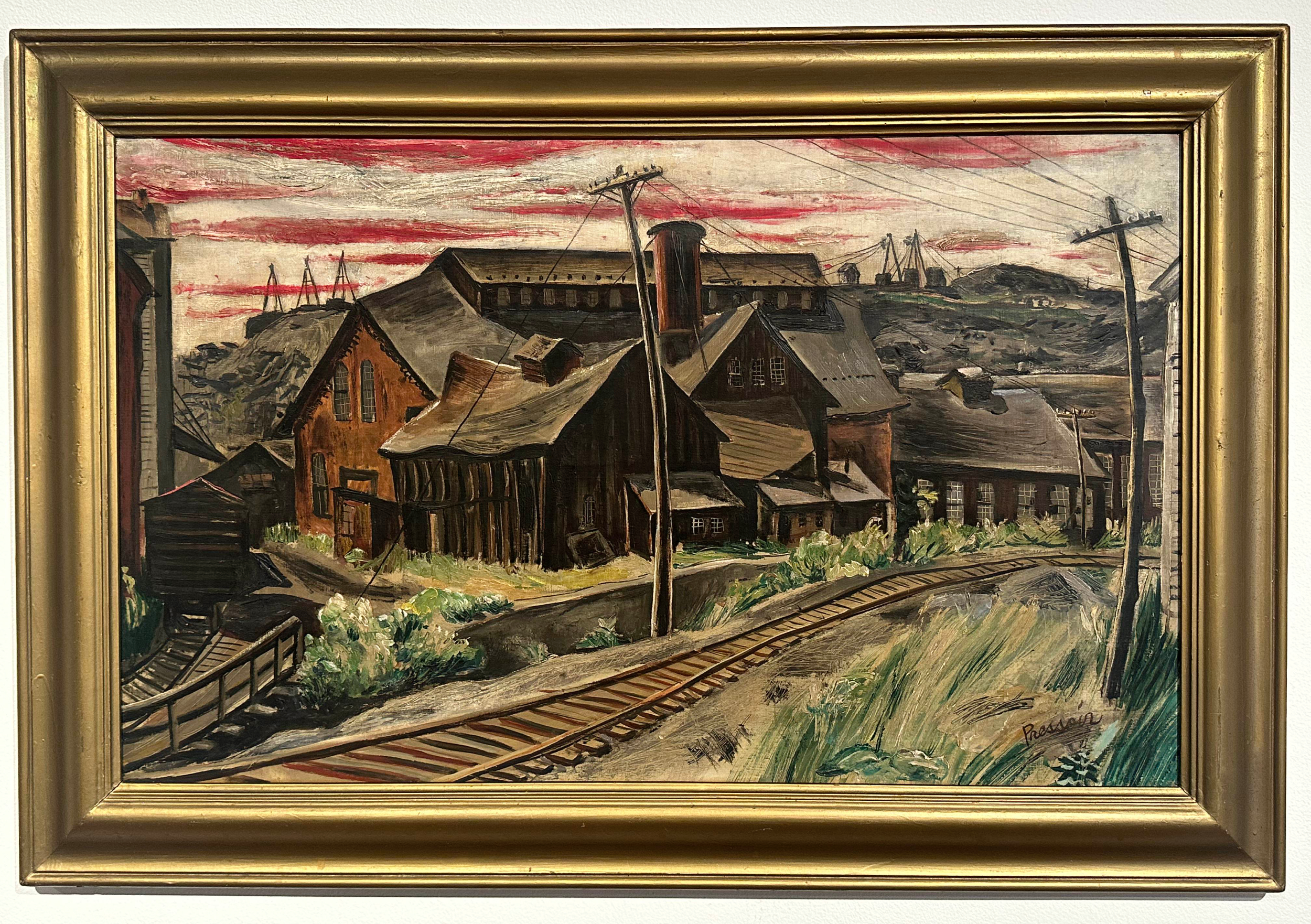
Esther Estelle Pressoir, Desolated Industrialism, early 20th century. Oil on canvas, 22 x 34 in. (55.88 x 86.36 cm.). Gift of Alan Peterkofsky in memory of his wife Beverly Peterkofsky, AC2024.5.
The other works conserved by Flux for Layers of Liberty and the re-installation are Esther Estelle Pressoir’s "Desolated Industrialism" (early 20th century) and Ross Eugene Braught’s "In the Valley" (1922). A new acquisition gifted to PAFA by a friend of Pressoir, "Desolated Industrialism" was cleaned and treated, though it will eventually need a new frame. "In the Valley," having undergone extensive conservation in the 1980s, was in exceptionally good condition and required minimal work aside from restoring its custom-made frame, which had lost some of its gilding and was touched up using acrylic paint.
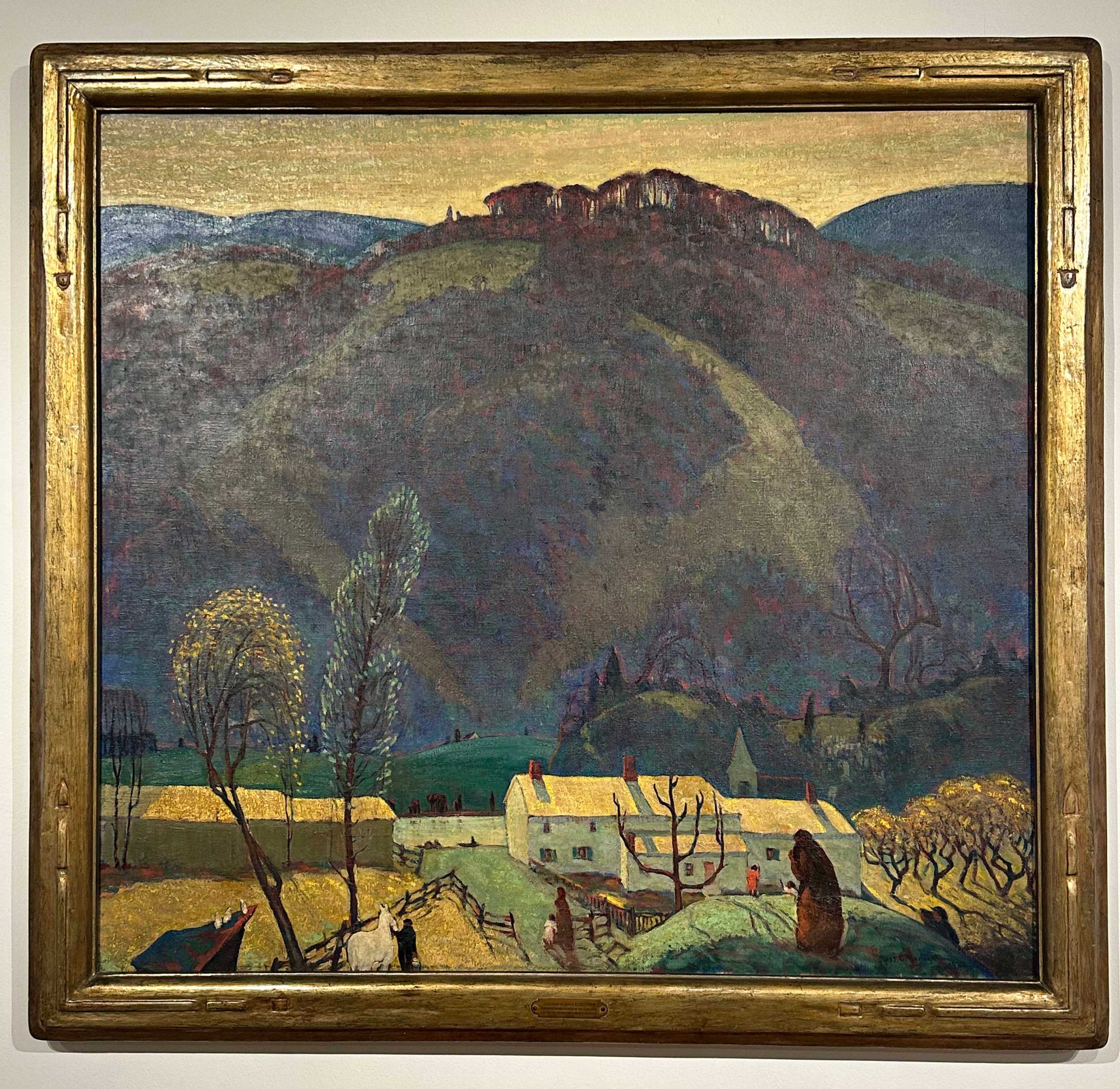
Ross Eugene Braught, In the Valley, 1922. Oil on canvas, 46 1/2 x 50 1/2 in. (118.1 x 128.3 cm.). John Lambert Fund, 1923.3.
We deeply appreciate Flux's dedication to restoring our artworks with such care. Mark your calendars now for the reopening of our permanent exhibition in 2026!
Photos from the Visit





We're so excited you're planning to visit PAFA!
Make time for art — visit us Thursday to Sunday.
Before reserving your tickets, please review helpful information about museum hours, accessibility, building access, and special admission programs.
If you have any questions, feel free to reach out to us at visitorservices@pafa.org — we’d love to help!

